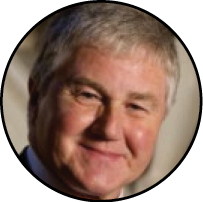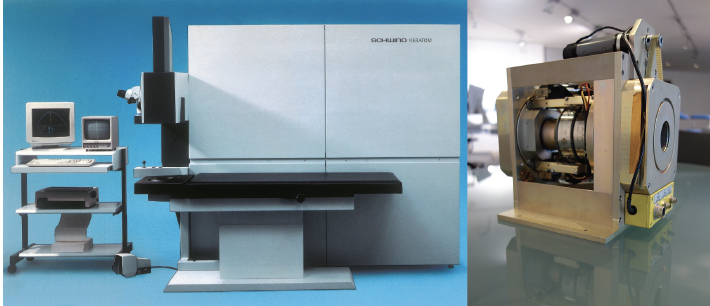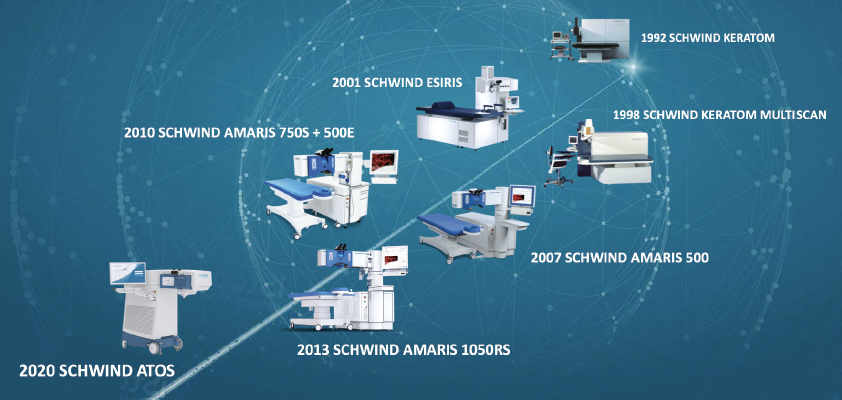
I've been involved in the development of laser systems for more than 50 years. Much of my early work in the 1960s, funded by the Ministry of Defense, was done with the Royal Air Force to establish thresholds for laser damage to the retina. This resulted in me sitting on or chairing many committees around the world that were created to protect the public from optical radiation. It also led to me drafting many of the codes of practice for laser safety. Working with the International Committee of the Red Cross, I chaired a committee that led to a Geneva Convention banning the use of antipersonnel lasers and an address to the United Nations that emphasized the importance of this cause. My early studies resulted in my developing a fundamental understanding of all the mechanisms involved in the interactions between lasers and biological tissues and ultimately laid the groundwork for me to make contributions to the research and design of lasers for surgical purposes, specifically in ophthalmology. I introduced the world's first diode laser for treating retinal conditions, and I also hold the grandfather patents for refractive surgery and cofounded Summit Technology, which was the first laser company to obtain US FDA approval for laser refractive surgery.
THE START OF A HEALTHY COLLABORATION
My original patents were for broad beam laser systems that used an iris diaphragm to slowly increase or decrease the area of the beam falling on the cornea. Shortly after my patents, SCHWIND designed a laser system that used a continuous belt with a series of holes to increase or decrease the size of the aperture (Figure 1). Rather than react with animosity or aggression, I worked in harmony with them to move the field of refractive surgery forward. Our healthy collaboration continues today.

Figure 1. The first SCHWIND laser used a continuous belt with a series of holes to increase or decrease the size of the aperture.
In the early days of excimer laser technology, there were three major players: Summit Technology, Visx, and SCHWIND eye-tech-solutions. Initially, all procedures were PRK, which was performed on the subepithelial surface of the cornea. These procedures were extremely successful, but in the early days patients complained of pain related to removing the epithelium and some patients experienced mild disturbances of transparency or haze. New innovations led to the development of treatments that could be performed underneath a surgically lifted flap of stroma material. This procedure, termed LASIK, continues to be a successful procedure, but a subsequent version, laser epithelial keratomileusis (LASEK), only enjoyed brief success.
SCHWIND led a second revolution, refocusing efforts of refractive correction back to the surface. It developed a totally new treatment, transepithelial PRK (Smart SurfACE), in which its AMARIS laser was fired through the intact epithelium. This was a far less painful procedure for patients, and it avoided all of the problems of biomechanics that are associated with LASIK. This helped make surface ablation a more attractive option once again.
BACKED BY GOOD SCIENCE
SCHWIND has always been an innovative company built on a solid foundation of strong science and phenomenal relationships with their customers. As a result, they can adapt quickly to clinical feedback to meet the needs of the surgical community. SCHWIND works together with clinicians to bring innovations through the industrial design and commercialization stages (Figure 2). In terms of laser eye surgery especially, this has been extremely important.

Figure 2. A timeline of innovation brought to the market by SCHWIND.
Until recently, all laser vision correction was accomplished through the removal of tissue by potentially weakening the mechanical structure of the queue near. But because the superficial stroma is the strongest part of the cornea, concerns about long-term biomechanical stability prompted some to consider alternative methods of refractive correction. One attempt involved preserving the superficial fibers but removed a piece from the deeper stroma.
The latest development in corneal refractive surgery is lenticule extraction, a minimally invasive procedure performed through small access incisions. SCHWIND is once again leading the way with its SmartSight procedure, performed with its ATOS femtosecond laser. During the procedure, the ATOS creates a predefined lenticule in the intrastromal corneal tissue and small peripheral incisions in the cornea through which the lenticule can be removed. There is no flap and no laser ablation, but it does affect the biomechanical strength of the system. Some patients are drawn to the lenticule extraction procedure because it is performed with a single laser system, resulting in a fast treatment time with high patient comfort. Current indications include myopia and astigmatism correction.
LOOKING AHEAD
The success of the lenticule extraction procedure has led to another innovative concept, which is stroma supplementation surgery. Rather than weakening the eye, like with other procedures, stroma supplementation strengthens the eye by insertion of a specially processed lenticule derived either from human or pig corneal stromal tissue. I am currently involved in developing a technique to extract the lenticules from pig corneas and use them to reshape the human cornea. The shaped lens is made from natural pig stroma with all the spatial relationships of the collagen preserved but no cell and no antigens or antibodies. I believe this represents a breakthrough in the future of refractive surgery; for the first time, we have a procedure that achieves refractive correction while increasing biomechanics. I have no doubt that SCHWIND will once again be watching the advent of the procedure and leading the way in innovation.
Another element that I consider will have a big impact on refractive surgery is our understanding of human genetics with respect to the cornea in general and to keratoconus and ectasia in particular. The potential ability to genetically identify people with atypical corneal biomechanics prior to surgery will be a major step forward in corneal refractive surgery. It will essentially help surgeons avoid postoperative corneal ectasia and other complications that have been seen in the past.
CONCLUSION
SCHWIND’s surface ablation procedures and the speed with which it produces innovations are second to none. This is for two main reasons. First, the company has a great team of scientists, optical engineers, and other key personnel that keep up with the fast-paced innovation required in ophthalmology. Second, SCHWIND has a huge international family of customers. The company listens to what the customers need and quickly and efficiently brings innovations into the marketplace.
I've enjoyed a wonderful relationship with SCHWIND over the years. The company has had a great 30 years, but the best is certainly yet to come.

